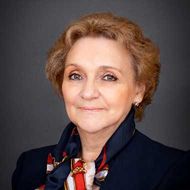- A
- A
- A
- ABC
- ABC
- ABC
- ðÉ
- ðÉ
- ðÉ
- ðÉ
- ðÉ
- HSE University
- Faculty of World Economy and International Affairs
- School of International Regional Studies
- News
- A cultural battlefield for China, Japan, and South Korea in XXI century: competing for global and regional leadership in intangible cultural heritage (ICH)
-
School
-
Online
The School of International Regional Studies is a research and educational centre seeking to revive international regional studies as an academic discipline in Russia. The department’s world-class professors train the next generation of regional studies specialists while developing an increasingly prestigious research school.
Simons G., Glaser M., Krivushin I. et al.
Cham: Palgrave Macmillan, 2025.
Sviridov V., Andreeva T.
Society. 2025. P. 1-11.
Anastasia Perminova, Anastasiia Tyukhtina, Antasheva M. et al.
In bk.: Circular Economy and Sustainable Innovation. Pathways and Applications for a Greener Future, Volume 2. Springer, 2025. Ch. 1. P. 1-24.
Shein S., Ryzhkin E.
Political Science. PS. ðÆÐïÐüÐêð░ÐÅ Ðêð║ð¥ð╗ð░ Ðìð║ð¥ð¢ð¥ð╝ð©ð║ð©, 2022. No. 89.

A cultural battlefield for China, Japan, and South Korea in XXI century: competing for global and regional leadership in intangible cultural heritage (ICH)
The seminar was moderated by Sadygzade Murad, President of the Russian Middle East Association, Assistant Head of the Department of International Regional Studies of the Faculty of World Economy and International Affairs, HSE University. 
Dr. Eriks pointed out that definition of intangible heritage was occurred in 2006.  At that time was introduced the Convention that was ratified by 30 countries. Within this Convention intangible cultural heritage was defined and it means the practices, representations, expressions, knowledge, skills - as well as the instruments, objects, artefacts and cultural spaces associated therewith - that communities, groups and, in some cases, individuals recognize as part of their cultural heritage. 
Nowadays, as mentioned Dr. Eriks, the Convention is accepted and ratified by 180 States. The expert noted two main lists that exists in the UNESCOÔÇÖs list. As Dr. Eriks said, if a State wants to declare its cultural heritage as intangible, it has two ways. First list is composed of intangible heritage elements that concerned communities and States Parties consider require urgent measures to keep them alive. The second one is made up of those intangible heritage elements that help demonstrate the diversity of this heritage and raise the awareness about its importance.┬á
One of the issue which the expert has stressed is the quite small budget of the Organization. It accounts 7.8 million dollars. 
Dr. Eriks highlighted the role of the Intergovernmental Committee for the Safeguarding of Intangible Cultural Heritage. The main function of this Committee is the application of the Convention. According to the expertÔÇÖs assessment, there was a trio of leaders by the number of items inscribed on the List of Intangible Cultural Heritage. They were and still are China, Japan, and South Korea.┬á
The essential thing that is made from investigation related to the following conclusion. China, Japan, and South Korea perceive ICH not so much as a platform and an instrument to safeguard the intangible cultural heritage of their own and other member-states, as a tool to define cultural differences and prevent cultural appropriation. Moreover, these States use ICH to influence on the international arena and other domestic and foreign policy goals. 
Dr. Eriks answered all participantÔÇÖs questions.┬á
The link to the video: https://youtu.be/LbDMDQD7wLA
- About
- About
- Key Figures & Facts
- Sustainability at HSE University
- Faculties & Departments
- International Partnerships
- Faculty & Staff
- HSE Buildings
- HSE University for Persons with Disabilities
- Public Enquiries
- Studies
- Admissions
- Programme Catalogue
- Undergraduate
- Graduate
- Exchange Programmes
- Summer Schools
- Semester in Moscow
- Business Internship
- © HSE University 1993–2025 Contacts Copyright Privacy Policy Site Map
- Edit



